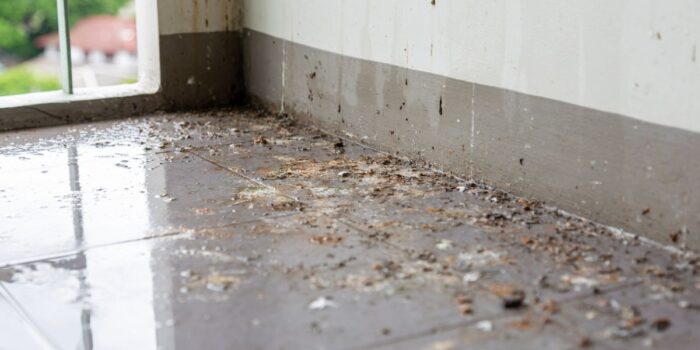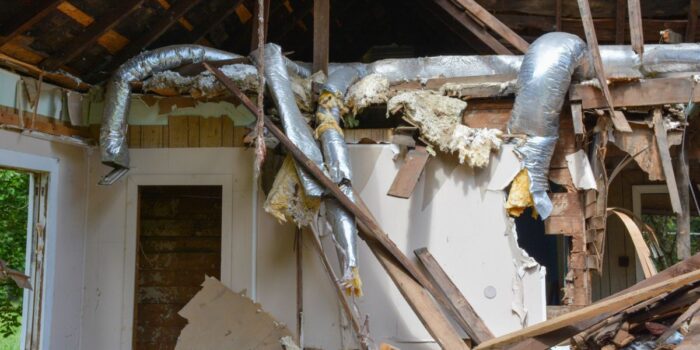As hurricane season quickly approaches in Florida, it’s time to proactively prepare you and your home from the damages of Mother Nature. Weatherizing your home is not just about safeguarding against the occasional storm; it involves implementing comprehensive measures to protect your property and enhance its energy efficiency year-round. This blog will delve into the weatherizing definition, explain what it means to weatherize your home and offer practical, actionable tips to secure your residence against the fierce winds and rains of hurricane season.
Weatherizing Definition: What Does it Mean for Your Home?
Weatherizing definition refers to the process of protecting a building from the elements to make it more resistant to weather conditions and more energy-efficient. In the context of hurricane preparedness, weatherizing your home involves fortifying it against the specific threats posed by storms, such as high winds, heavy rainfall, and flying debris. This process not only helps in preventing immediate storm damage but also contributes to reducing your home’s overall energy consumption by sealing leaks and improving insulation.
Key Tips for Weatherizing Your Home for Hurricane Season
1. Inspect and Repair Your Roof
- Your roof is your home’s first line of defense against a hurricane. Begin by inspecting it for any missing, loose, or worn-out shingles and replace them as necessary. Consider using hurricane straps to strengthen the connection between your home’s structure and its roof, which can prevent the roof from detaching during a storm.
2. Seal Windows and Doors
- Check all windows and doors for gaps and leaks. Use caulking and weather-stripping to seal them effectively. For added protection, install storm shutters to shield against high winds and debris. These barriers can be crucial in preventing structural breaches during a hurricane.

3. Strengthen Garage Doors
- Garage doors are particularly vulnerable to hurricane winds. Reinforce them with braces and ensure they have the necessary hardware to withstand the pressures of a hurricane. If possible, consider upgrading to a hurricane-rated garage door.
4. Clear the Yard
- Remove any loose items from your yard that could become projectiles during high winds, such as lawn furniture, gardening tools, and toys. Trim trees and shrubbery to reduce the risk of branches breaking off and damaging your home.
5. Improve Drainage
- Proper drainage is vital in preventing water accumulation that can lead to flooding and structural damage. Ensure your gutters and downspouts are clean and clear of debris. Consider installing a sump pump if you have frequent issues with basement flooding.
6. Secure External HVAC Units
- Make sure that your external HVAC units are raised above potential flood levels and securely anchored. Covering the units with a protective casing can also help shield them from flying debris.
7. Invest in a Generator
- Power outages are a common occurrence during hurricanes. Having a generator can keep critical appliances running, such as refrigerators and sump pumps, and maintain comfortable indoor temperatures until power is restored.
8. Evaluate Your Home’s Insulation
- Proper insulation plays a crucial role in weatherizing your home. Check your attic, walls, and floors for adequate insulation. Adding extra insulation where necessary can help maintain your home’s internal temperature during power outages and reduce energy costs throughout the year.
Post-Hurricane Weatherizing Tips Examining Your Home After a Hurricane
After a hurricane has passed, it’s crucial to assess your home for any damage that may have occurred and take immediate steps to weatherize it against potential subsequent storms or weather events. Here’s how to effectively conduct a post-hurricane examination and prepare your home for the future:
Initial Safety Inspection
- Ensure Safety First: Before you begin inspecting your home, make sure it’s safe to enter. Check for structural damage like cracks in the foundation, damaged gas lines, or electrical issues that could pose immediate risks.
- Document Damage: As you assess the home, take photos or videos of the damage to aid in insurance claims and future repairs.
Exterior Check
- Roof and Gutters: Look for missing shingles, damaged flashing, or punctures. Ensure that gutters and downspouts are intact and clear of debris to prevent water damage.
- Windows and Doors: Check for cracks, broken seals, or frame damage. Temporary repairs such as sealing with weatherproof tape can prevent further weather ingress until permanent fixes are made.
- Landscaping and Drainage: Remove debris that may block water runoff. Check for new erosion or changes in landscape grading that might affect drainage.
Interior Evaluation
- Walls and Ceilings: Check for water stains or bubbling paint that might indicate leaks. Addressing these quickly can prevent mold growth and structural decay.
- Appliances and Systems: Inspect your HVAC system and appliances for water damage or disruption. Ensure that everything is fully functional, as continued exposure to moisture can lead to further complications.
Post-Hurricane Weatherizing Tips
- Reinforce Vulnerable Areas: If certain areas consistently show damage, consider additional fortification such as impact-resistant windows or enhanced roof bracing.
- Improve Sealing and Insulation: Upgrade weather stripping and insulation to better withstand future weather events. This not only protects the home but also increases energy efficiency.
- Plan for Quick Action: Create a plan for quick response to future hurricanes, including having materials on hand for temporary repairs like boarding up windows or patching leaks.

Weatherize Now, Worry Less Later
Preparing your home for hurricane season through effective weatherization is one of the most proactive steps you can take as a homeowner in Florida. Not only does weatherizing your home provide peace of mind knowing your home is fortified against harsh weather, but it also enhances the overall energy efficiency and comfort of your living space. If you’re unsure where to start or need professional assistance, consider consulting with weatherization experts who can provide personalized advice and services.
Are you ready to take the next step in protecting your property? Contact local experts today and ensure your home is ready to face whatever the hurricane season throws its way. Remember, the best time to weatherize your home is now—before the storm hits.
Want to build a custom hurricane-resistant home? Call Synergy Homes for a free consultation today!
Comments are closed here.